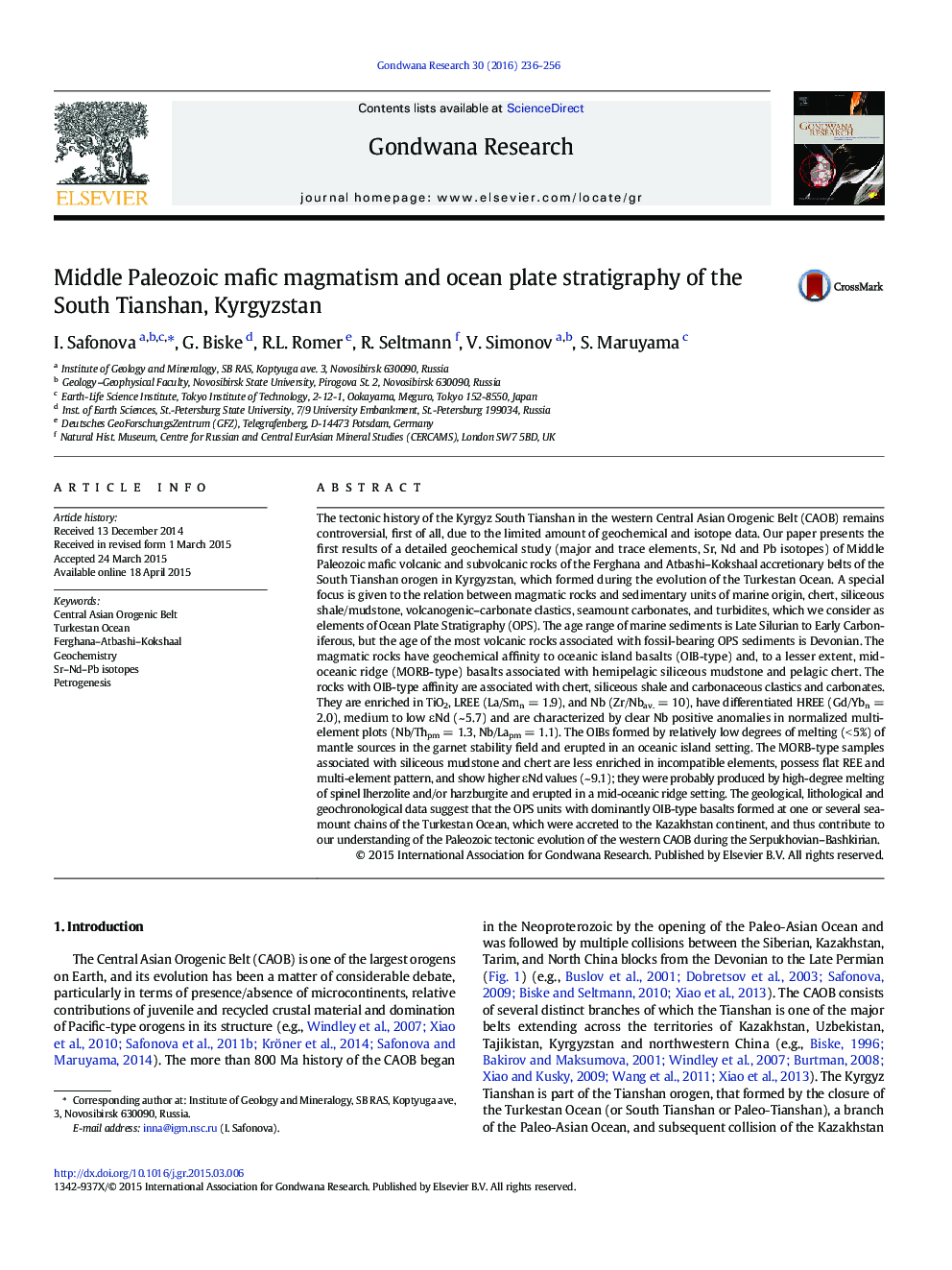| کد مقاله | کد نشریه | سال انتشار | مقاله انگلیسی | نسخه تمام متن |
|---|---|---|---|---|
| 4726666 | 1640141 | 2016 | 21 صفحه PDF | دانلود رایگان |
• Southern Tianshan hosts Middle Paleozoic oceanic sediments and mafic volcanic rocks.
• Volcanic rocks are associated with marine chert, carbonate, siliceous shale and turbidite.
• Volcanic rocks possess geochemical features of OIB with subordinate MORB.
• The dominating OIBs were derived from low-degree melting of garnet peridotite.
• Wide age range of OIBs and their domination in OPS suggest a relatively large oceanic realm.
The tectonic history of the Kyrgyz South Tianshan in the western Central Asian Orogenic Belt (CAOB) remains controversial, first of all, due to the limited amount of geochemical and isotope data. Our paper presents the first results of a detailed geochemical study (major and trace elements, Sr, Nd and Pb isotopes) of Middle Paleozoic mafic volcanic and subvolcanic rocks of the Ferghana and Atbashi–Kokshaal accretionary belts of the South Tianshan orogen in Kyrgyzstan, which formed during the evolution of the Turkestan Ocean. A special focus is given to the relation between magmatic rocks and sedimentary units of marine origin, chert, siliceous shale/mudstone, volcanogenic–carbonate clastics, seamount carbonates, and turbidites, which we consider as elements of Ocean Plate Stratigraphy (OPS). The age range of marine sediments is Late Silurian to Early Carboniferous, but the age of the most volcanic rocks associated with fossil-bearing OPS sediments is Devonian. The magmatic rocks have geochemical affinity to oceanic island basalts (OIB-type) and, to a lesser extent, mid-oceanic ridge (MORB-type) basalts associated with hemipelagic siliceous mudstone and pelagic chert. The rocks with OIB-type affinity are associated with chert, siliceous shale and carbonaceous clastics and carbonates. They are enriched in TiO2, LREE (La/Smn = 1.9), and Nb (Zr/Nbav. = 10), have differentiated HREE (Gd/Ybn = 2.0), medium to low εNd (~ 5.7) and are characterized by clear Nb positive anomalies in normalized multi-element plots (Nb/Thpm = 1.3, Nb/Lapm = 1.1). The OIBs formed by relatively low degrees of melting (< 5%) of mantle sources in the garnet stability field and erupted in an oceanic island setting. The MORB-type samples associated with siliceous mudstone and chert are less enriched in incompatible elements, possess flat REE and multi-element pattern, and show higher εNd values (~ 9.1); they were probably produced by high-degree melting of spinel lherzolite and/or harzburgite and erupted in a mid-oceanic ridge setting. The geological, lithological and geochronological data suggest that the OPS units with dominantly OIB-type basalts formed at one or several seamount chains of the Turkestan Ocean, which were accreted to the Kazakhstan continent, and thus contribute to our understanding of the Paleozoic tectonic evolution of the western CAOB during the Serpukhovian–Bashkirian.
Figure optionsDownload as PowerPoint slide
Journal: Gondwana Research - Volume 30, February 2016, Pages 236–256
